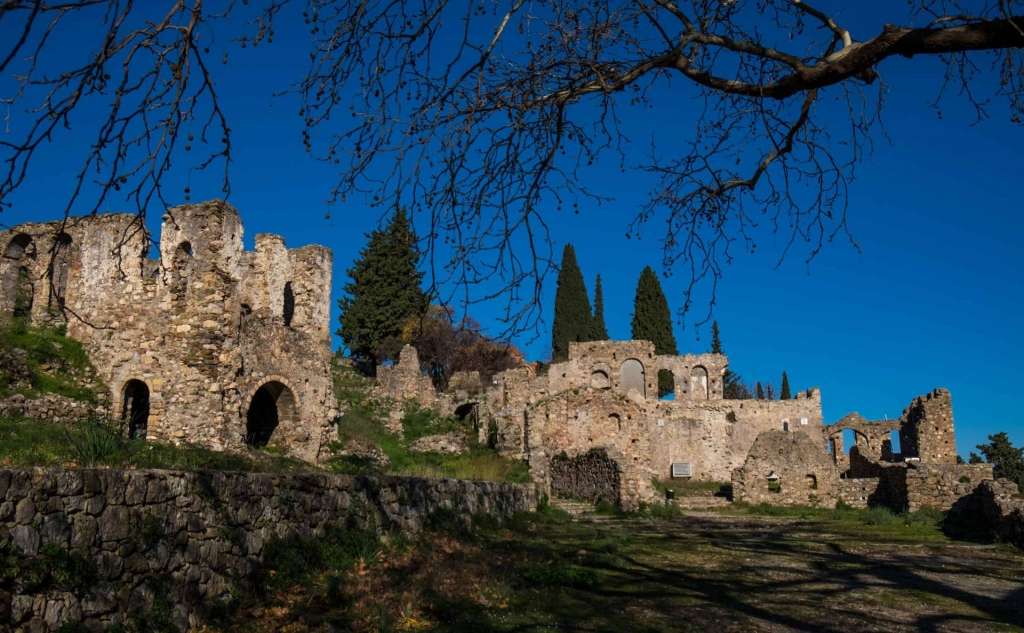Monastery of the Forty Martyrs

The new monastery is located between Sparta and the village of Chrysafa (8 km from Sparta) at an altitude of 400 metres. It is one of the most important monasteries in Laconia. It was founded in 1305 in the ravine of the Sofronis torrent and was moved to its current location at the beginning of the 17th century. In the old monastery, the temple was formed in a natural cave. Τhe Holy Table was placed αt the back of the cave, while all surfaces were painted by the great Lacedaemonian hagiographer Κonstantinos Manassis.
The monastery from the 16th century was cruciform and had several privileges that allowed it to develop into an important spiritual centre. In 1770, it was set on fire by the Turkalbanians and eventually deserted. It operated again during the years of the Revolution of 1821 with numerous offerings of supplies and food to the warriors. In fact, Theodoros Kolokotronis, in a letter to the Abbot, thanked the Elders for their support in the Struggle. The monastery was set on fire again in 1826 by Ibrahim and in 1943 by the Germans.
Externally, the monastery has the form of a fortress with a high fenced area. In the courtyard's centre, the catholicon, a cruciform inscribed temple with a dome built in 1620, has a dominant presence. There are built-in ancient architectural members in its masonry, while its interior is all painted. The hagiography, in 1620, is the work of Georgios Moschos, a well-known painter of the Cretan School from Nafplio. Next to the catholicon is the chapel of Zoodochou Pigi, which dates back to 1707 and is said to have housed a secret school during the Turkish occupation. There is also a chapel in honour of St. Nektarios.
The monastery has a rich library (with manuscript codes), ecclesiastical relics, and rare documents that visitors can see in its museum. There are 82 manuscripts in the Sparta Historical Archive and various old editions of church books. In 1980, the image of the Holy Forty Martyrs, dating back to the 13th century, was stolen from the monastery. The monastery is for men and celebrates on March 9th. Finally, in the Monastery, there is a guest house for the visitors' service, while the student camps of the Holy Metropolis of Monemvasia and Sparta are also hosted.



